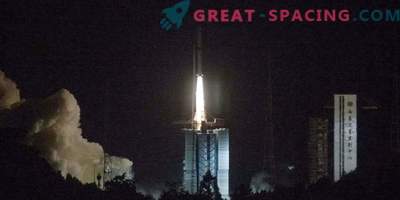
Queqiao satellite took off from the southwest launch center Xichang
On May 21, a satellite relay was launched in China that will allow you to set up communication between the Earth and the rover located on the far side of the moon. The administration reported that the Queqiao satellite had flown into space from the southwestern launch center Xichang early in the morning.
The satellite separated from the Changzheng-4C launch vehicle after 25 minutes of flight and deployed its solar panels and antennas in flight to its destination. This is a key step for China, planning to become the first country to send a probe to the far side of the moon.
The device relays the connection between the controllers on Earth and the far side of the Moon, where the Chiang-4 probe (named after the goddess of the Moon in Chinese mythology) will be sent later this year. The opposite side of the moon is called dark because it is not observed from the Earth, although it was captured in a photograph in 1959 (for the first time). Chang'e-4 wants to be placed in the Aitken basin near the lunar south pole. This will be the second Chinese probe that landed on the moon after the first Yutu mission (2013). At first it seemed that the apparatus had crashed, since the rover had stopped sending signals to Earth. But then he “came to life” and examined the surface of the earth’s satellite for 31 months.
Next year, China plans to launch the Chang'e 5 rover to get samples and return it to Earth. The country is pouring billions into the military space program, hoping to create a space station by 2022 and send people to the moon in the near future.











































